Released today by WRAP as part of UK Plastics Pact Campaign, the guidance sets out instructions to packaging designers with an aim of streamlining the polymers used for rigid plastic packaging such as bottles and pots, tubs and trays. Further guidance on films and flexible packaging is anticipated at a later date.
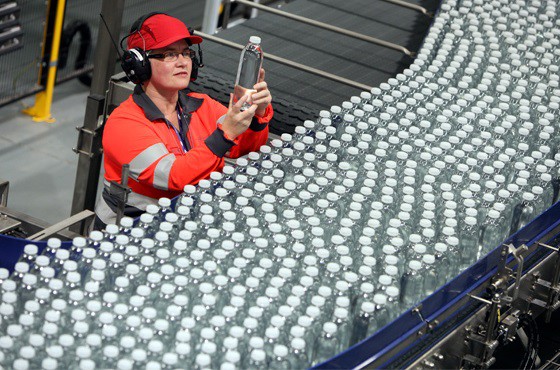
It is hoped that the guidance will help to increase the “efficiency and effectiveness” of the UK recycling system, while helping to reduce confusion amongst the public of what can be recycled.
This will tie in with changes to the On-Pack Recycling Labelling Scheme (OPRL), which will adopt clearer guidance on which plastic polymers can be considered ‘recyclable’ compared to current guidelines.
Refreshed OPRL guidance will take into account which types of plastic packaging are actually recycled, at scale and in practice, WRAP says.
Material choice
WRAP’s guidance highlights a preference for clear PET on the basis that the end market for this material is higher. By using ‘clear’ there is the greatest potential for it to be used back, ideally into plastic packaging, WRAP says.
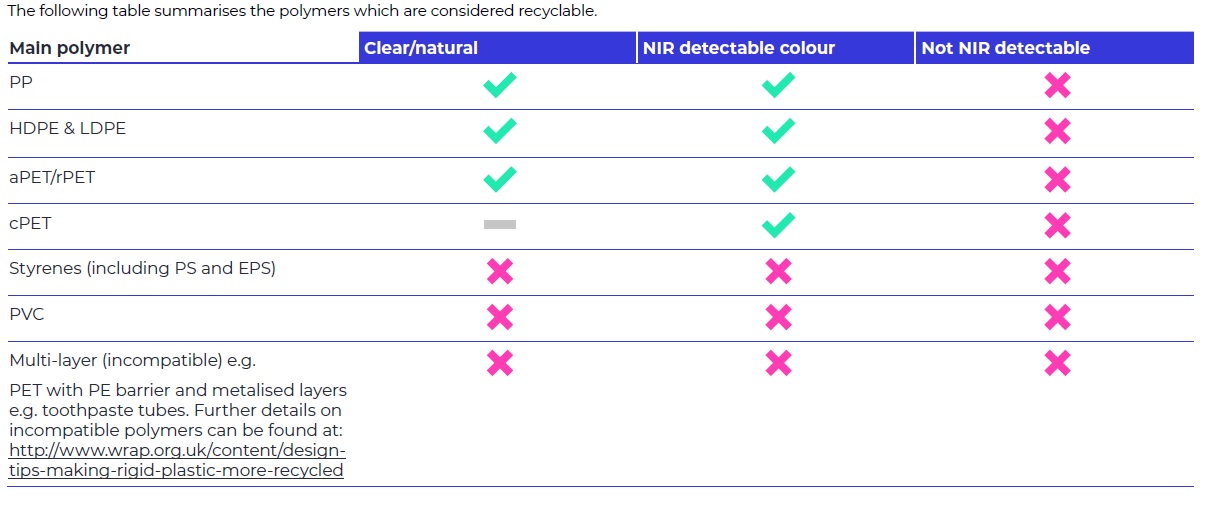
This echoes Coca Cola’s recent announcement that it is moving from green PET to clear for its Sprite soft drink bottles to incorporate more rPET into the bottles (see letsrecycle.com story).
The preference for clear plastics – in this instance HDPE – extends to milk bottles, with WRAP preferring clear over white plastic.
“White is not a preferred colour for HDPE bottles as this can be mistaken for natural (clear) HDPE by the NIR scanners in the recycling centres. This results in the contamination of the clear HDPE material (which impacts the colour of this material),” the guidance states.
“White is not a preferred colour for HDPE bottles as this can be mistaken for natural (clear) HDPE by the NIR scanners in the recycling centres. This results in the contamination of the clear HDPE material”
The guidance also discourages the use of PVC – which has been identified by recyclers as a particularly problematic packaging material to recycle – as well as styrenes and multi-layer packaging.
On coloured plastics, only those that can be sorted in the recycling processes using near-infra red technology will be deemed recyclable under the new criteria, WRAP says. It plans to publish further guidance on this in the coming months, specifically in relation to new near-infra-red (NIR) detectable black plastics.
There are instances where coloured plastics are favoured, such as in HDPE non-food contact bottles, with packaging primarily sorted on the basis of colour, which the guidance notes is important to meet legislative requirements around producing food-grade material.
‘Rationalising’
Commenting on the new guidelines, Peter Maddox, director of WRAP UK, said: “Through The UK Plastics Pact we are working at pace with our members to respond to this, and ensure that all plastic packaging is re-usable, recyclable or compostable by 2025. This new guidance is a significant milestone in our journey towards reaching that target.
“By rationalising the number of polymers used in packaging, we can develop a more efficient recycling system, and reduce confusion for citizens.”
Peter Maddox
WRAP
“Businesses that specify, design and produce plastic packaging will be able to draw on this resource for best practise guidance in selecting plastic polymers which are recyclable, while retaining the important protective properties that packaging has. While some plastics are classed as recyclable, there is a need to move beyond this, ideally selecting polymers which have a greater recyclability potential than others. In doing so it will help us to achieve other Pact targets, notably to achieve an average of 30% recycled content across all pack formats.”
OPRL
Commenting on the release of the guidance Jane Bevis, chair of OPRL said: “The public find plastics confusing and, with widespread concerns over irresponsible disposal and environmental pollution by plastic packaging, are increasingly condemning all plastic packaging as intolerable.
“But plastic packaging has a key role in protecting our environment too – well-chosen polymers used in well-designed packaging are vital to reducing food waste and the resulting methane and other greenhouse gas emissions.”
Related Links
WRAP: Polymer choice and recyclability guidance







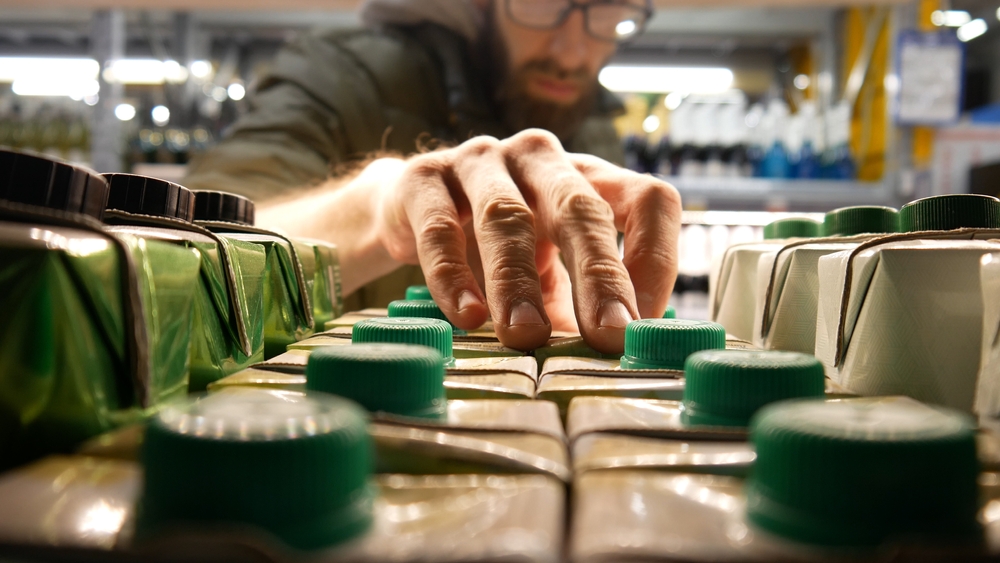
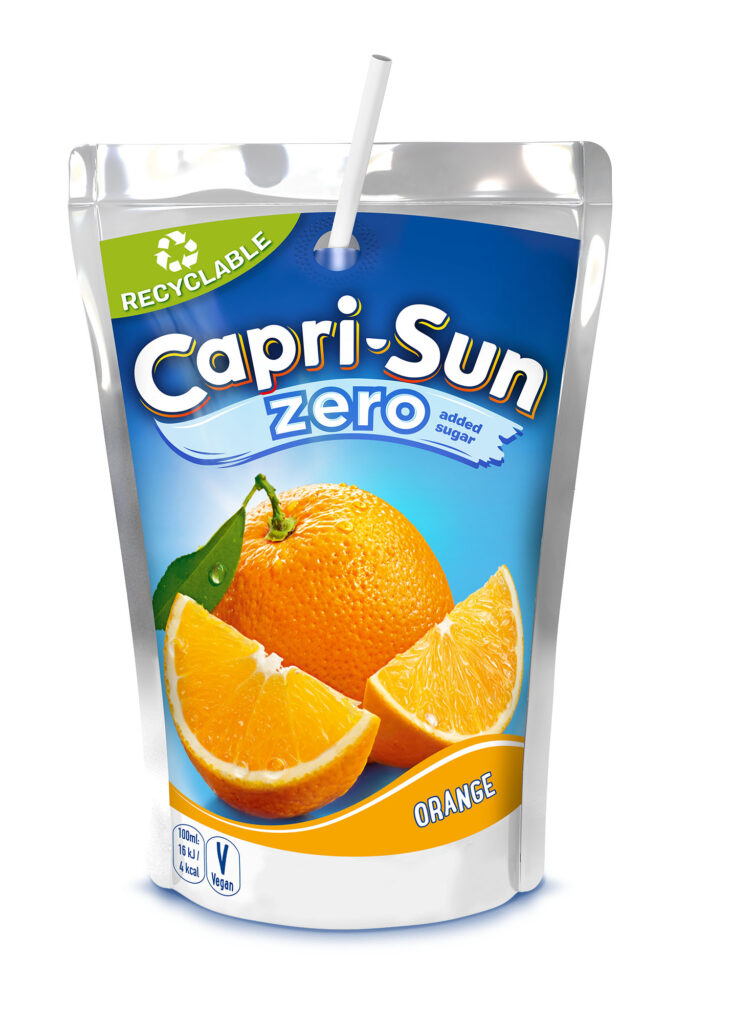
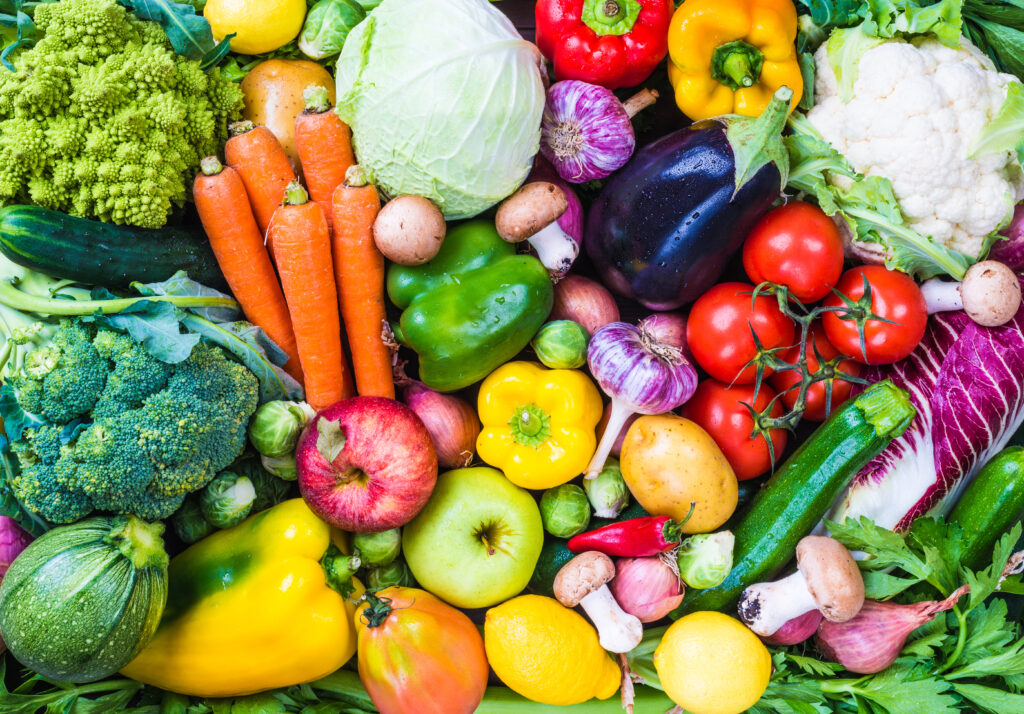


Subscribe for free